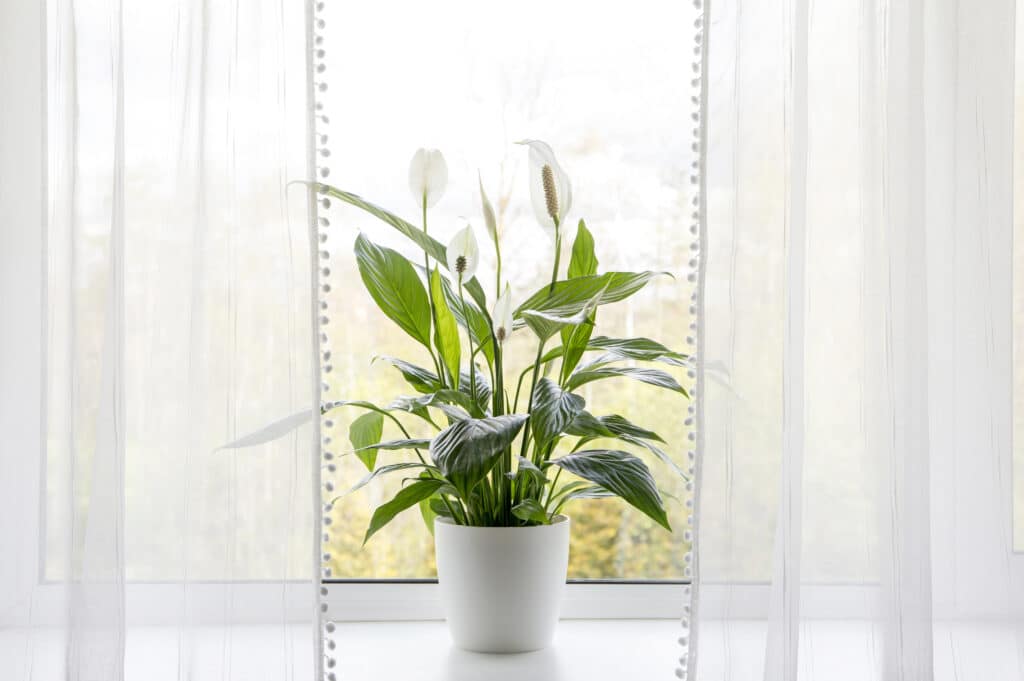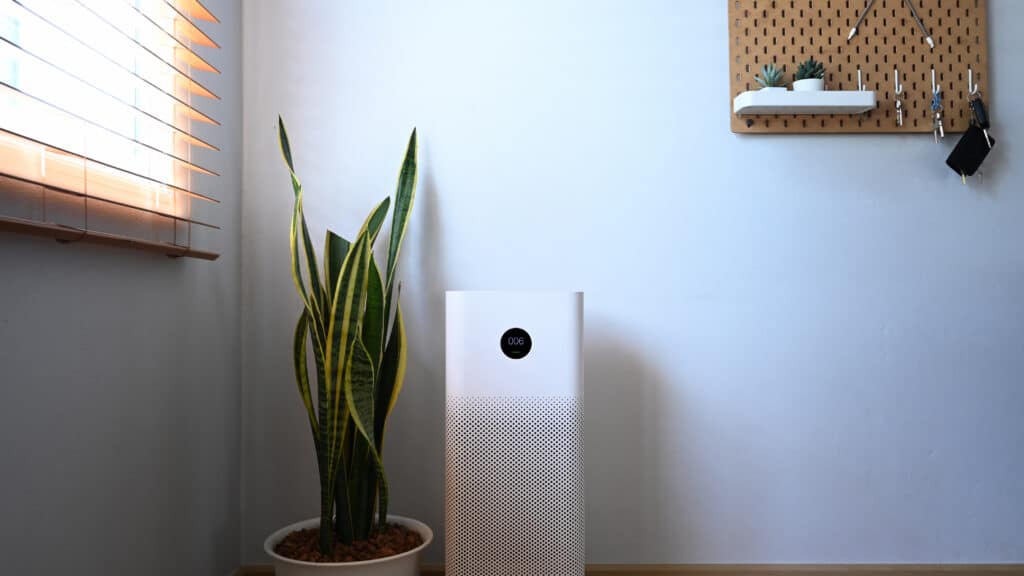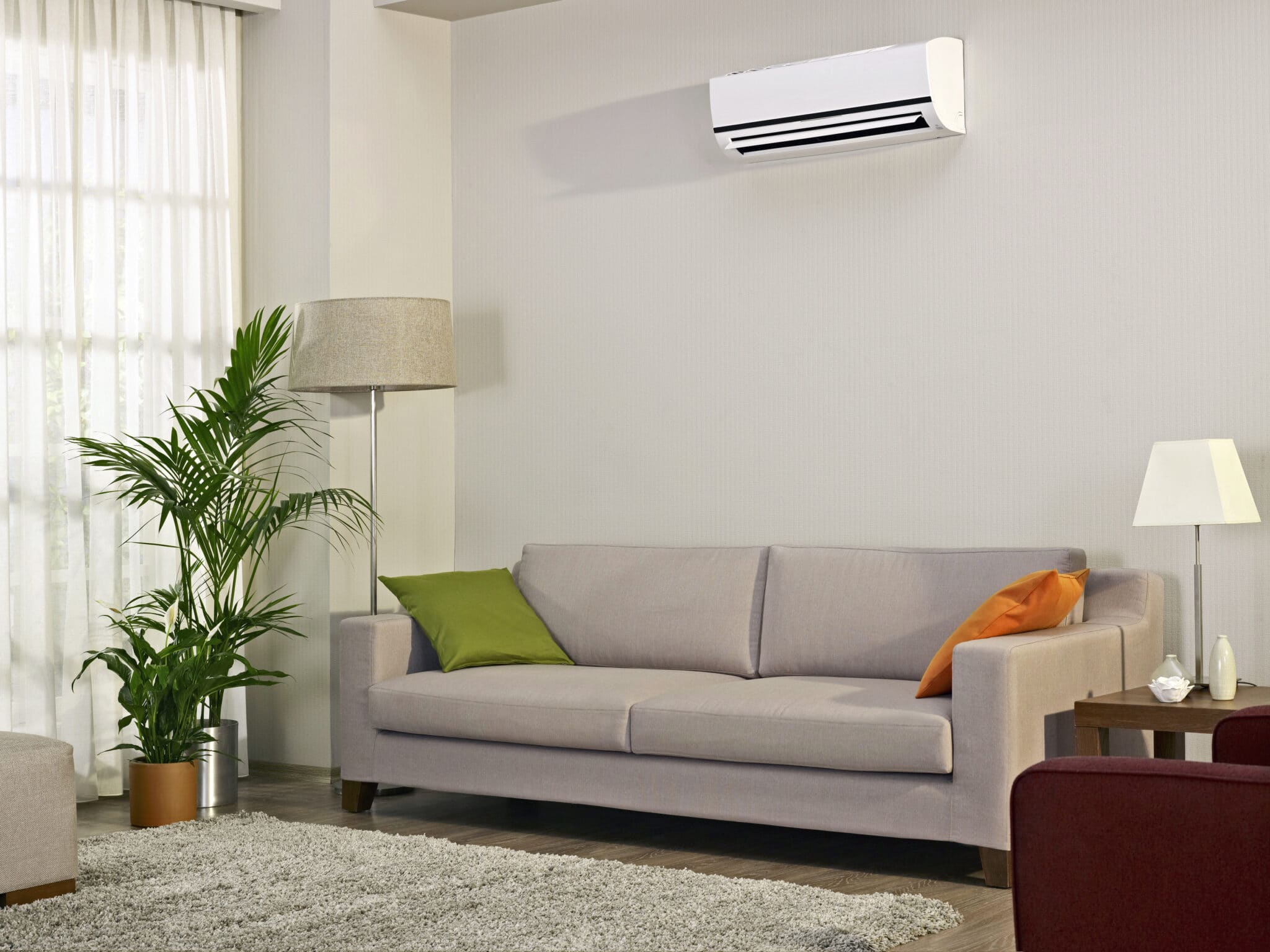Air quality refers to the condition of the air within our surroundings. It measures how clean or polluted the air is, which is crucial for our health and well-being. Good air quality directly affects our respiratory health and overall quality of life.
Ensuring clean air in our living spaces is essential for maintaining optimal health and comfort. Without clean air, we may experience various health issues, including respiratory problems and decreased immunity. Therefore, monitoring and improving the air we breathe indoors is vital for a healthy living environment.
Importance of Maintaining Good Air Quality
Maintaining good indoor air is important for several reasons. Firstly, it helps reduce the risk of respiratory issues such as asthma and allergies. Polluted air can exacerbate these conditions and lead to more severe health problems over time.
Additionally, clean air promotes better sleep, improves cognitive function, and boosts overall productivity. In cities like San Diego, CA, Spring Valley, CA, and El Cajon, CA, where people spend a lot of time indoors due to busy lifestyles, ensuring clean indoor air is even more critical.
Common Indoor Air Pollutants
Sources of Indoor Air Pollution
Indoor air pollution can come from various sources. Common pollutants include dust, pet dander, mold, and volatile organic compounds (VOCs) emitted by household products such as cleaning supplies, paints, and furniture.
Cooking fumes and tobacco smoke also contribute to indoor air pollution. Understanding these sources can help in take steps to reduce their presence in our homes.
Health Impacts of Poor Indoor Air Quality
Poor indoor air quality can lead to numerous health issues. Short-term effects include headaches, dizziness, and irritation of the eyes, nose, and throat. Long-term exposure to indoor pollutants can cause chronic respiratory diseases, heart disease, and even cancer.
Children, the elderly, and individuals with preexisting health conditions are particularly vulnerable. Addressing indoor air quality is crucial for protecting the health of all household members.
How Indoor Plants Improve Air Quality
Photosynthesis and Oxygen Production
One of the primary ways indoor plants improve air quality is through photosynthesis. During this process, plants absorb carbon dioxide and release oxygen, which helps maintain a healthy balance of gases in the air.
This increase in oxygen levels can make indoor environments feel fresher and more vibrant. Having plants in your home can contribute to a more invigorating and healthy living space.
Absorption of Pollutants
Indoor plants also play a significant role in absorbing pollutants. Many plants can take in harmful substances like VOCs, formaldehyde, and benzene through their leaves and roots.
These pollutants are then broken down into less harmful compounds and stored in the soil, making the air cleaner and safer to breathe. Incorporating a variety of plants can enhance this natural filtration process.
Role in Humidity Regulation
Plants release moisture into the air through a process called transpiration. This helps regulate indoor humidity levels, which is beneficial for both human health and the structural integrity of buildings.
Proper humidity levels can prevent dry skin, respiratory issues, and the growth of mold and mildew. Maintaining the right indoor humidity can create a more comfortable and healthy home environment.

Scientific Evidence Supporting Indoor Plants for Air Quality
NASA Clean Air Study Overview
The NASA Clean Air Study, conducted in the late 1980s, was one of the first major research efforts to investigate the air-purifying abilities of indoor plants. The study found that certain plants could effectively remove pollutants like formaldehyde, benzene, and trichloroethylene from the air.
This research has been foundational in promoting the use of indoor plants for cleaner indoor environments. The study’s findings continue to influence practices related to indoor pollution reduction today.
Recent Research and Findings
Recent studies have continued to support the findings of the NASA study. Research has shown that plants like spider plants, snake plants, and peace lilies can significantly reduce indoor pollution levels.
These studies have also explored the mechanisms through which plants absorb and break down pollutants, providing a deeper understanding of their air-purifying capabilities. Ongoing research helps refine our approach to using plants for enhancing indoor environments.
Expert Opinions
Experts in environmental science and health agree that indoor plants can play a crucial role in creating cleaner indoor spaces. While they may not eliminate the need for other solutions, such as air purifiers and ventilation systems, they offer a natural and aesthetically pleasing way to enhance indoor environments. Combining plants with other strategies can create a healthier living space.

Best Indoor Plants for Improving Air Quality
Spider Plant
Spider plants are known for their air-purifying abilities. They are particularly effective at removing formaldehyde and xylene, making them an excellent choice for improving air quality in homes and offices.
Spider plants are also easy to care for and can thrive in a variety of indoor conditions, making them a popular choice for both beginners and experienced plant owners.
Snake Plant
Snake plants, also known as mother-in-law’s tongues, are easy to care for and can thrive in low-light conditions. They are effective at removing toxins like benzene, formaldehyde, and trichloroethylene from the air.
Their hardiness and minimal care requirements make them a great addition to any indoor space, especially for those who may not have a green thumb.
Peace Lily
Peace lilies are not only beautiful but also highly efficient at filtering out harmful chemicals like ammonia, benzene, and formaldehyde.
They thrive in shaded areas and require minimal maintenance. Peace lilies also produce lovely white flowers, adding an elegant touch to any room while improving air quality.
Aloe Vera
Aloe vera is well-known for its medicinal properties, but it also helps improve air quality by removing pollutants such as formaldehyde and benzene.
Additionally, it releases oxygen at night, making it a great plant for bedrooms. Aloe vera’s dual benefits of air purification and healing properties make it a valuable addition to any home.
Boston Fern
Boston ferns are excellent at adding humidity to the air and removing pollutants like formaldehyde and xylene. They do require a bit more care, including regular watering and misting, to keep them healthy and effective.
Despite their higher maintenance needs, Boston ferns’ ability to improve air quality and humidity makes them a worthwhile investment.
Care and Maintenance of Air-Purifying Plants
Watering Guidelines
Proper watering is crucial for maintaining the health of air-purifying plants. Overwatering can lead to root rot, while underwatering can cause the plants to wither. It’s important to understand the specific watering needs of each plant and to ensure that the soil remains consistently moist but not waterlogged. Monitoring soil moisture and adjusting watering schedules can help keep plants healthy.
Light Requirements
Different plants have varying light requirements. Some, like snake plants and peace lilies, can thrive in low light conditions, while others, like aloe vera and Boston ferns, need more sunlight.
Placing plants in the right location based on their light needs is essential for their growth and air-purifying abilities. Providing adequate light ensures that plants can perform photosynthesis effectively.
Soil and Fertilization Tips
Using the right soil mix and fertilizing regularly can help plants stay healthy and effective at purifying the air. A well-draining soil mix is usually best, and organic fertilizers can provide the necessary nutrients without introducing harmful chemicals. Regular fertilization supports plant growth and enhances their ability to absorb pollutants.
Placement Tips for Maximum Air Quality Benefits
Best Locations in the Home
To maximize the air-purifying benefits of indoor plants, it’s important to place them in areas where they can have the most impact. Common areas like living rooms, bedrooms, and kitchens are great places to start.
Additionally, placing plants near windows can help them receive the light they need. Strategic placement ensures that plants can effectively improve air quality throughout the home.
Grouping Plants for Enhanced Effects
Grouping multiple plants together can enhance their air-purifying effects. This is because different plants absorb different pollutants, and having a variety can create a more comprehensive air purification system.
Plus, grouping plants can create a lush, green focal point in any room. Combining various plants can lead to synergistic benefits for air quality and aesthetics.
Avoiding Common Placement Mistakes
Avoid placing plants in areas with extreme temperature fluctuations, such as near heating or cooling vents. Also, be mindful of placing plants in high-traffic areas where they might be easily knocked over or damaged. Ensuring stable conditions helps plants thrive and perform their air-purifying functions effectively.
Potential Downsides and How to Mitigate Them
Overwatering and Mold Growth
Overwatering is a common issue that can lead to mold growth and root rot. To prevent this, it’s important to follow proper watering guidelines and ensure that plants are in well-draining soil. Using pots with drainage holes can also help. Regularly checking soil moisture and adjusting watering practices can prevent water-related issues.
Pest Issues
Indoor plants can sometimes attract pests like spider mites and aphids. Regularly inspecting plants and using natural pest control methods, such as neem oil or insecticidal soap, can help keep these issues under control. Addressing pest problems promptly ensures that plants remain healthy and effective at purifying the air.
Toxicity to Pets
Some indoor plants can be toxic to pets if ingested. It’s important to research and choose pet-safe plants if you have animals in the home. Alternatively, placing toxic plants out of reach can help prevent any accidental ingestion. Ensuring the safety of both pets and plants can create a harmonious living environment.
Combining Plants with Other Air Quality Solutions
Air Purifiers and Ventilation Systems
While indoor plants are beneficial, they should be used in conjunction with other solutions for cleaner air. Air purifiers can help remove particles and allergens that plants may not be able to filter out.
Additionally, proper ventilation is crucial for maintaining a healthy indoor environment. Combining these methods can create a comprehensive approach to improving indoor air.
Regular Cleaning Practices
Keeping your home clean is essential for maintaining a healthy living space. Regular dusting, vacuuming, and cleaning of surfaces can help reduce the presence of indoor pollutants.
Plants can complement these practices by absorbing some of the pollutants that cleaning alone might miss. Consistent cleaning routines enhance the effectiveness of air-purifying plants.
Sustainable Home Improvements
Making sustainable home improvements, such as using eco-friendly building materials and reducing the use of harmful chemicals, can also contribute to a healthier indoor environment.
Integrating plants into these efforts can create a more sustainable living space. Sustainable practices combined with the natural benefits of plants can significantly improve the air you breathe indoors.
DIY Projects for Air Quality Enhancement
Creating a Vertical Garden
Vertical gardens are a great way to maximize space and add a touch of greenery to any room. They can be created using wall-mounted planters or shelves and are particularly effective in small spaces. Vertical gardens not only enhance air quality but also add an eye-catching feature to your home decor.
Building a Terrarium
Terrariums are miniature gardens housed in glass containers. They are easy to maintain and can add a unique, decorative element to your home while improving air quality. Creating a terrarium can be a fun and rewarding project that brings the beauty of nature indoors.
Crafting Indoor Plant Displays
Get creative with your indoor plant displays by using various containers, stands, and arrangements. Grouping different plants together in visually appealing ways can enhance both their air-purifying effects and the aesthetics of your home. Personalized plant displays can make your living space more enjoyable and inviting.
Future Trends in Indoor Plant Usage
Smart Plant Technology
The integration of smart technology with indoor plants is an emerging trend. Smart plant monitors can track soil moisture, light levels, and temperature, providing real-time feedback and care recommendations. These innovations can help plant owners ensure optimal conditions for their plants, enhancing their air-purifying capabilities.
Innovations in Plant Care
Innovations in plant care, such as self-watering planters and advanced hydroponic systems, are making it easier than ever to keep indoor plants healthy. These technologies can help even novice plant owners maintain thriving indoor gardens. Advanced care solutions simplify plant maintenance and improve plant health.
Predictions for Urban Living
As urban living continues to grow, the use of indoor plants is expected to become even more popular. Plants can help mitigate the effects of urban pollution and create healthier indoor environments in densely populated areas.
The future of urban living may see more integrated green spaces within homes and offices, enhancing air quality and overall well-being.
Expert Tips for Maintaining Healthy Indoor Air
Seasonal Care Routines
Adapting your plant care routines to the changing seasons can help keep your plants healthy year-round. This includes adjusting watering schedules, ensuring proper lighting, and protecting plants from extreme temperatures.
Seasonal care routines ensure that plants continue to thrive and purify the air throughout the year.
Long-term Plant Health Strategies
Long-term strategies for maintaining plant health include regular repotting, pruning, and monitoring for pests and diseases.
Keeping plants in optimal condition ensures they continue to provide air-purifying benefits. Consistent care practices support long-term plant health and air quality improvements.
Professional Advice and Resources
Consulting with plant care professionals or using resources such as gardening books and online forums can provide valuable insights and tips for maintaining healthy indoor plants.
Professional advice can help you troubleshoot any issues and improve your plant care practices. Accessing expert resources can enhance your ability to care for indoor plants effectively.
FAQs About Air Quality
What is the condition of indoor air quality?
Why is clean indoor air important?
Clean indoor air is important because it directly affects our respiratory health and overall quality of life. It helps reduce the risk of respiratory issues like asthma and allergies, promotes better sleep, and boosts cognitive function and productivity. Ensuring clean air indoors contributes to a healthier lifestyle.
How does the condition of indoor air impact respiratory health?
The condition of indoor air impacts respiratory health by determining the levels of pollutants and allergens present in the air we breathe. Polluted indoor air can exacerbate conditions such as asthma and allergies, leading to more severe health problems over time. Maintaining clean air indoors is vital for respiratory well-being.
What are some common sources of indoor pollution?
Common sources of indoor pollution include dust, pet dander, mold, volatile organic compounds (VOCs) from household products, cooking fumes, and tobacco smoke. These pollutants can negatively affect our health and contribute to various respiratory issues. Identifying and reducing these sources can improve indoor air.
How can we ensure clean indoor air in our homes?
Ensuring clean indoor air in our homes involves regular cleaning to reduce dust and allergens, using air-purifying plants, proper ventilation, and minimizing the use of products that emit VOCs. Additionally, using air purifiers can help maintain cleaner indoor air. Combining these strategies creates a healthier living space.



















